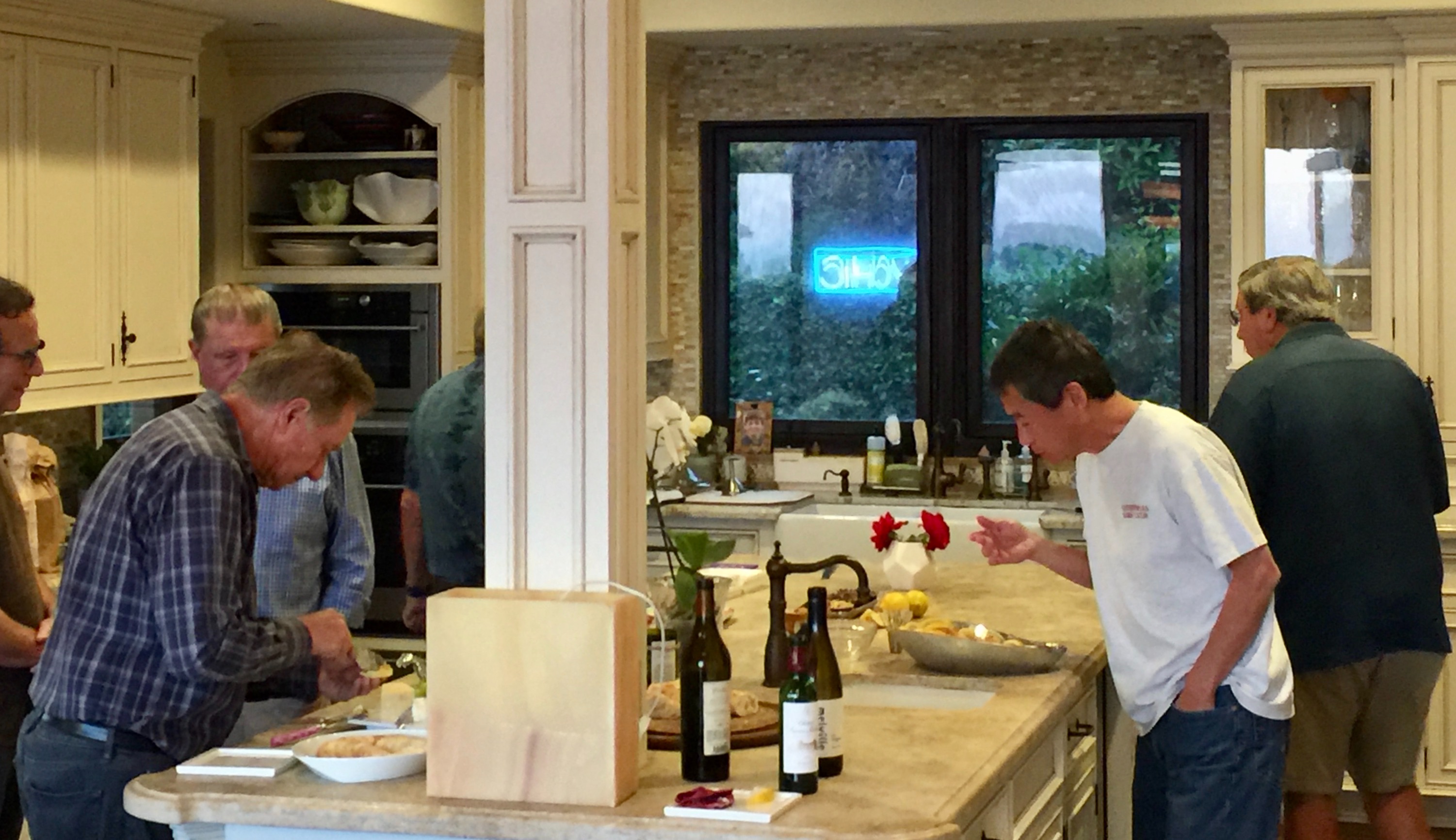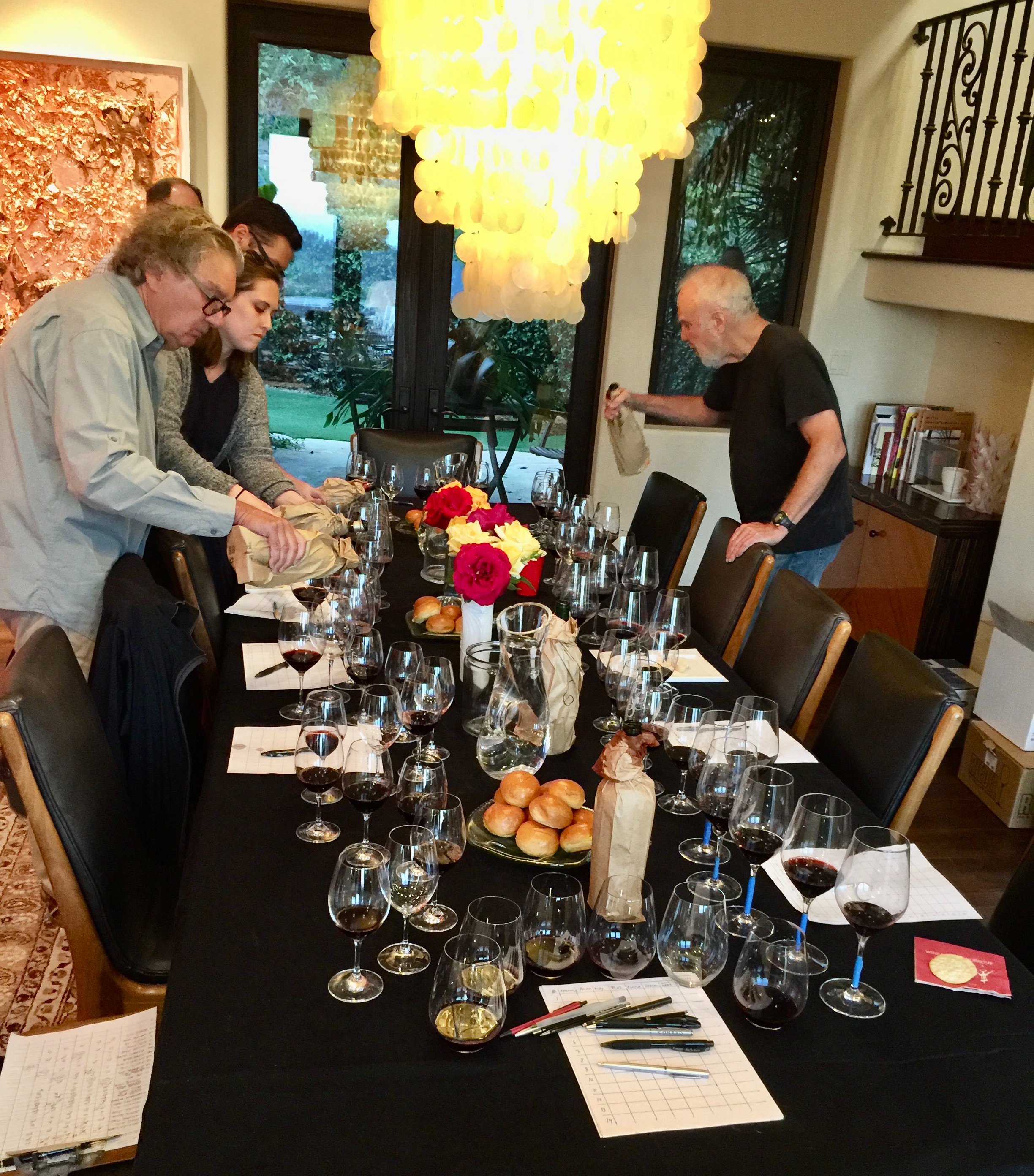Our monthly blind tasting group enjoyed another fun night at one of our members home with a wine theme of Bordeaux blends from anywhere, but as usual, we had some deviations. It was expected to be an interesting evening with a wide range of options from all over the world available.
As it turned out, of the 12 wines we had in 2 flights of 6, 8 came from either the right or left bank of Bordeaux.
After a couple of nice host provided starter wines and a large kitchen counter loaded up with numerous tasty morsels, we sat down for the serious investigative trudge into the brown bagged wines. Well, maybe not so much of a trudge.
First blind flight of 6:
Wine #1: For me, it had some Silver Oak like notes with eucalyptus and mint accents to the fruit profile which in this case is comprised of sweet blackberry and black current; past mid palate, more oak dominates and although I’m not calling it Silver Oak Napa, I’ve settled on Napa as the source; wrong- it’s 2012 SCHEID VINEYARDS ESTATE CLARET RESERVE MONTEREY which placed 3-4 in the flgiht; 50% Cabernet Sauvignon, 23% Petit Verdot, 22% Malbec, 5% Cabernet Franc.
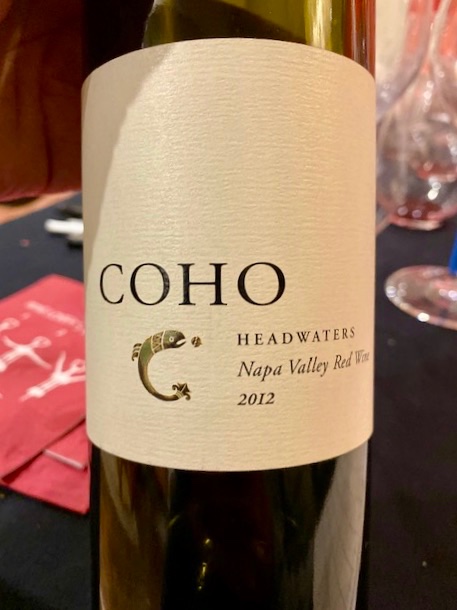
Wine #2: Following a deep, dark purple youthful color came talc and cedar on the nose; the taste had generous amounts of sweet black cherry along with noticeable oak influence, but not to a fault; it’s just not completely integrated yet; everything came together at the end as it finished on a high note, enough so, it came if first in the flight; it was 2012 COHO HEADWATERS RED WINE NAPA; 58% Cabernet Sauvignon, 39% Merlot and 3% Petit Verdot; I had actually bought this bottle to take to a friend who had a restaurant in N. Michigan called Coho; before traveling to that area, I learned she even had it on her wine list so I put it back in the cellar for the right time to open it up. This was obviously the right time.
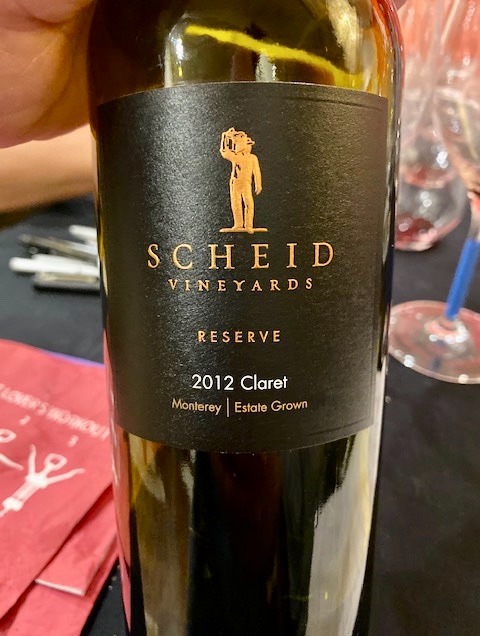
Wine #3: The color was a youthful, vibrant dark purple; this bottle seemed to be pretty tight and closed up; very little was offered in the nose and not much more on the palate; I could barely discern some tart blackberry fruit but liked the soft mouthfeel, but it really was understated and the group evidently got a lot more out of it than I did, scoring it 2nd in the fight: 2009 LA NOBLESSE HAUT-MEDOC.
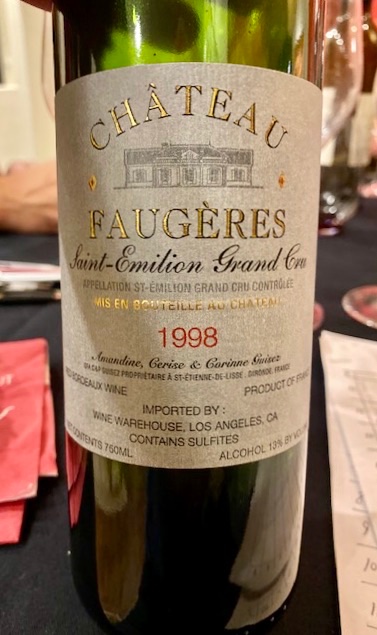
Wine #4: This had a bit of aging color; the nose was a huge toasty, oaky blast with burnt blackberry in the the background; I got some definitive barnyard Brett in the taste that accompanied dark chocolate and graphite laced black fruit; it finished a bit dry; most everyone scored this last in the flight: 2000 CHATEAU JEAN de GUE CUVEE PRESTIGE LALANDE de POMEROL
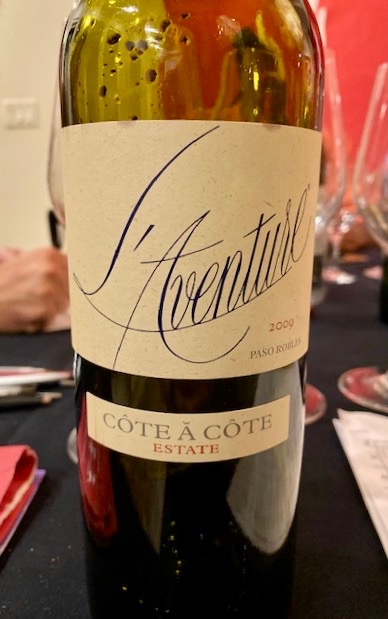
Wine #5: If I didn’t know better, I would have thought someone snuck in a dessert wine as this was sugar coated from the nose through the back end; sweet dark fruit, sweet tannins, sweet spices, sweet everything but the score turned out pretty sour: 2009 L`ADVENTURE COTE A COTE ESTATE STEPHAN VINEYARD PASO ROBLES. Not a Bordeaux blend, this was composed of 42% Syrah, 42 % Cabernet Sauvignon and 16 % Petit Verdot.
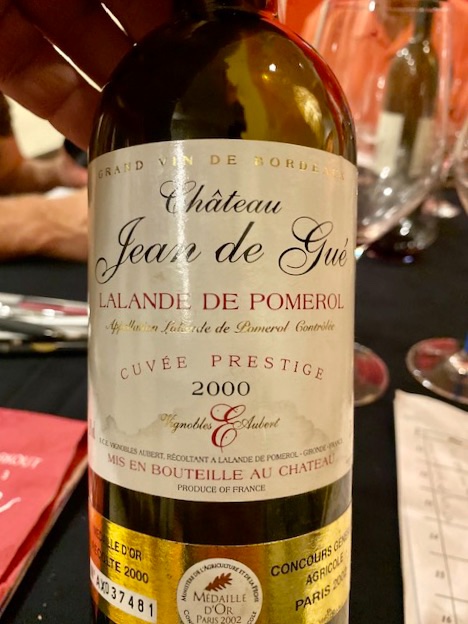
Wine #6: Loved the inviting nose this one had which strongly suggested elegance and balance forthcoming; the nose and taste profile included ripe red cherry/ berry which continued all the way through; it had perfect balance, elegance and was so easy especially during the finish; I scored it #2 in the flight: 1998 CHATEAU FAUGERES SAINT-EMILLION; Indicative blend: 85% Merlot, 10% Cabernet Franc, 5% Cabernet sauvignon.
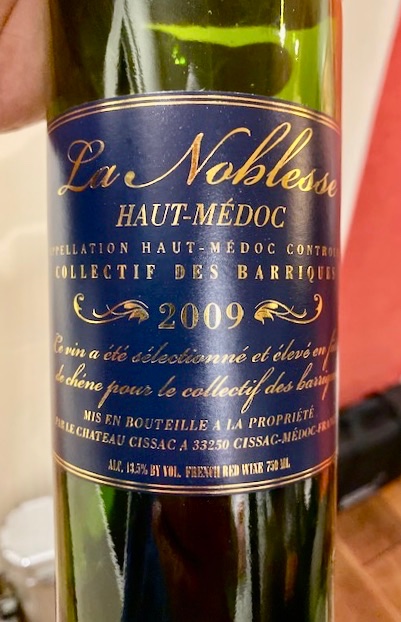
Second blind flight of 6:
Wine #1: The color denoted something with some age on it and the nose suggested something I want to avoid with lots of funk; it had a strange taste profile that is difficult to identify but I can conjure up dried and wild black currant with a touch of dark chocolate; I’m assuming this is not what the winemaker had in mind and it could be a bottle variation from storage, shipping or other handling issues; most others shared a similar dislike as it placed 5-6: 2000 CHATEAU de PEZ SAINT-ESTEPHE; 45% Cabernet Sauvignon, 45% Merlot, 5% Petit Verdot, 5% Cabernet Franc.
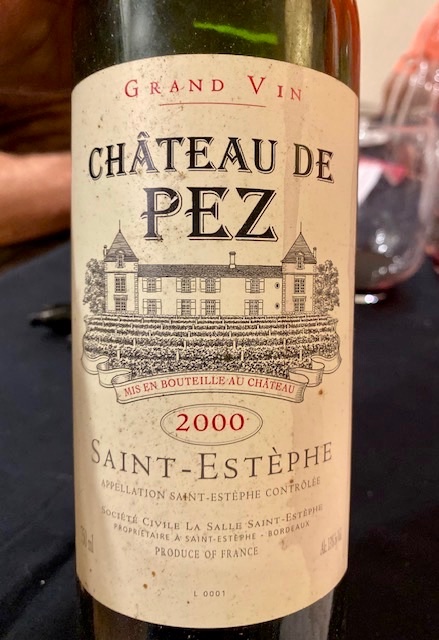
Wine #2: Sweet chocolate notes greats me in the first nose and then black cherry/ berry fruit takes over and continues on throughout; it’s full bodied, has layered complexity and seems good until it finishes a bit disjointed; I surmised this was coming from a young wine that needs more time to integrate; well, it’s relatively young: 2010 FRANC MAYNE SAINT-EMILLION. Although unconfirmed, one stated this is 90% Merlot.
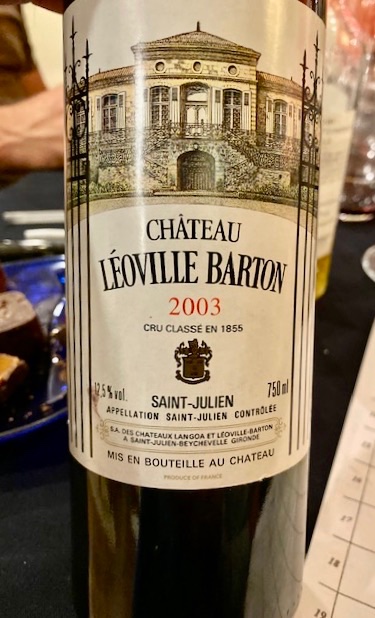
Wine #3: Pleasant with acceptable sweet black cherry dominated the aromatics and beyond; there’s some cedar and spice providing nice accents to this soft and smooth textured wine; it placed mid flight: 2001 CHATEAU HAUT-CARLES FONSAC; 60% Merlot, 40% Cabernet Franc.
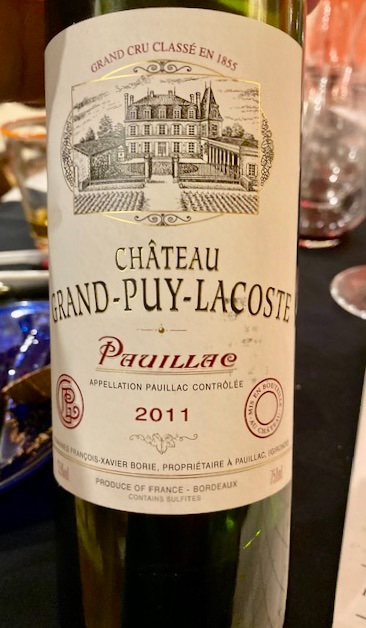
Wine #4: Young and energetic, this had lots of oak influence in the nose, but balanced out with nice, rich black cherry, black currant and plum fruit staying the course thereafter; it had soft tannins and a long, sustained finish; I rated it high up in the flight; 2011 CHATEAU GRAND PUY-LACOSTE PAUILLAC 78% Cabernet Sauvignon.
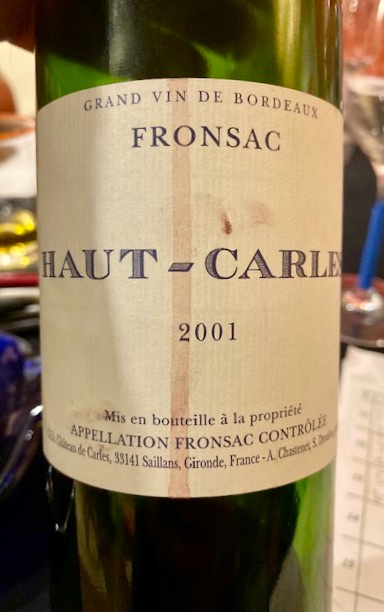
Wine #5: I liked the nose and its inviting spicy dark fruity notes; there was more to like once tasted as generous amounts of rich and full on black currant dominated with sandalwood and cedar accents; this had layered depth and complexity, was full bodied and nicely balanced; my #1 and the group’s #2 in the flight; 2010 CHATEAU DUHART-MILON PAULIAC; made of Cabernet Sauvignon, Merlot and Cabernet Franc.
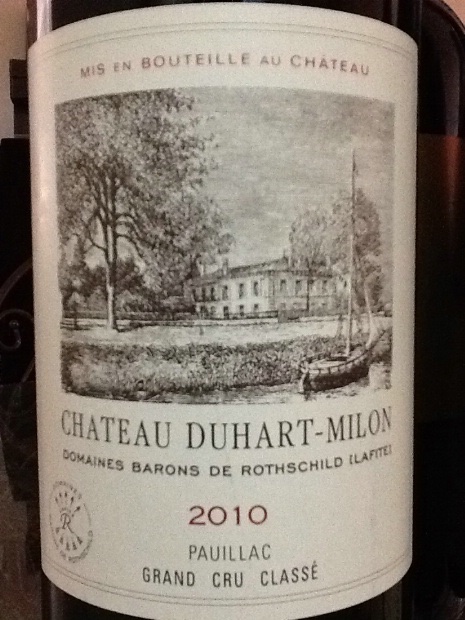
Wine #6: I immediately identified this bottle as being flawed with distinct 4-ethylphenol Brettanomyces type character of barnyard and bandaid aromas; no further investigation necessary: 2003 LEOVILLE-BARTON ST. JULIAN
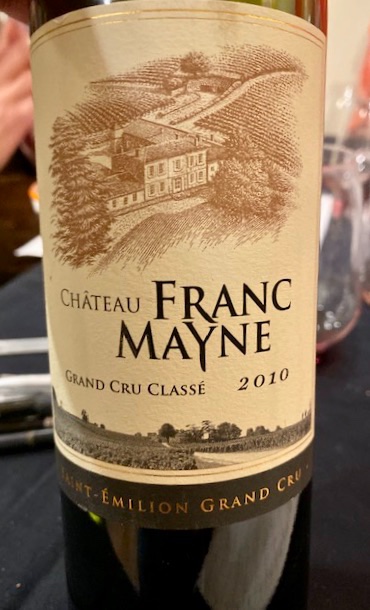
As always, blind tastings are fun and educational. Certainly, some of our members had different ideas as to what constitutes a Bordeaux blend which is supposed to be only comprised of Cabernet Sauvignon, Merlot, Cabernet Franc, Petit Verdot, Malbec and Carmenere although it is rare to find one that includes all 6. In the US, these are called Meritage, but most are not labeled as such because it is required that the winery must pay to join the Meritage Society to indicate it on the label.
Cheers,
Blake
